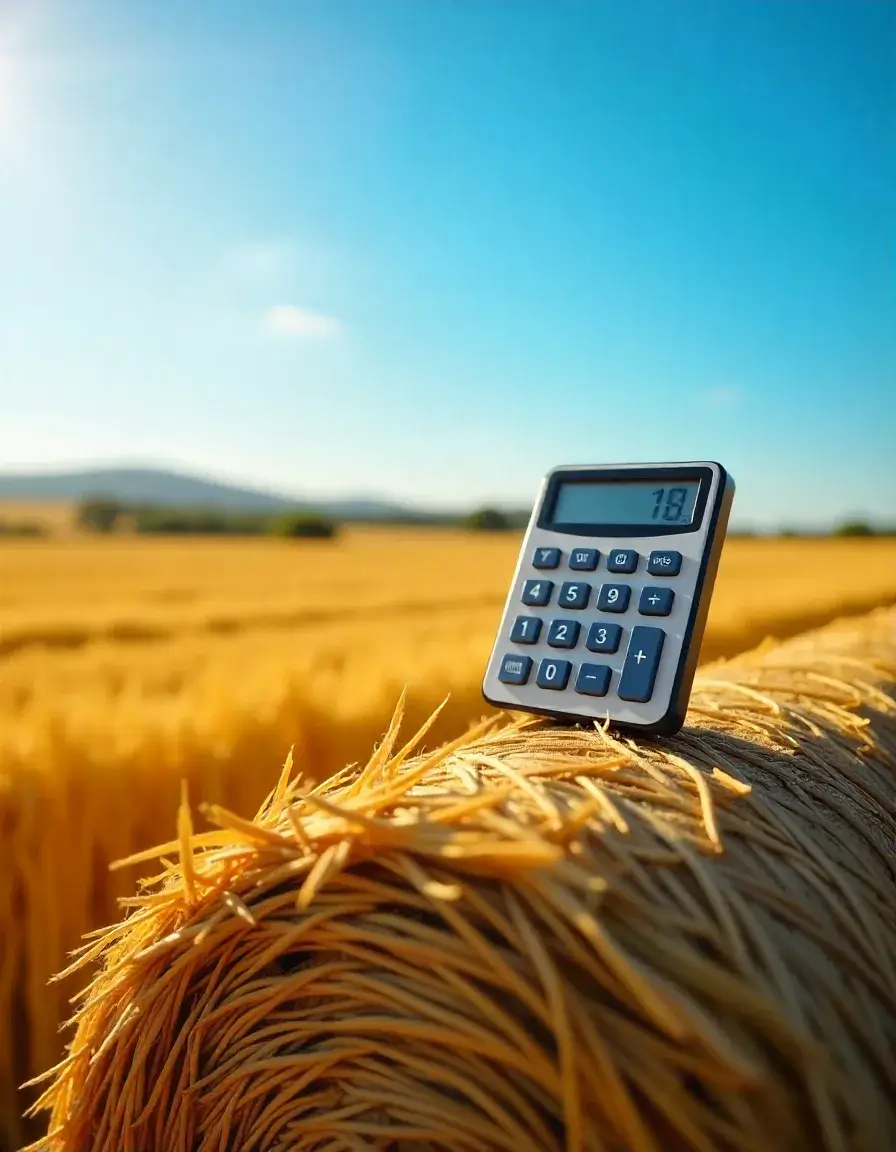Agricultural Land Value Calculator
Inputs
Our Agricultural Land Value Calculator helps farmers, landowners, investors and advisors estimate farmland value per acre (or hectare) using two practical methods:
Comparable-based pricing and Income-capitalization. The tool incorporates soil fertility, irrigation reliability, crop yield adjustment, and location/access factors so you get an explainable, market-aware estimate.
Why specialized farmland valuation matters
Valuing farmland is different from valuing residential or commercial land. Agricultural value depends on productive capacity and long-term income potential as much as on location. Key drivers include:
- Soil fertility and quality — directly impacts crop yields and income.
- Irrigation & water access — determines reliability and cropping intensity.
- Crop types and yields — high-value crops raise land value.
- Access to markets and inputs — proximity to buyers and suppliers reduces costs.
- Comparable sales and agricultural income data — provide benchmarks and evidence.
A valuation that ignores these elements can mislead investors and sellers. Our calculator blends the most relevant inputs into two transparent valuation models so you can pick the one that fits your data and needs.
Two explainable valuation methods included
1) Comparable-based valuation (recommended when recent sales exist)
This method starts from local sale prices (comps) measured per acre or hectare and adjusts for farm-specific features.
Formula:
Adjusted value per acre = Comparable price per acre × Soil multiplier × Irrigation multiplier × Location multiplier × Yield adjustment
When to use: You have at least one or more reliable local sale prices for similar farmland.
2) Income-capitalization (recommended when reliable income data exists)
This method converts agricultural profitability into a land value using a capitalization rate (cap rate). It’s widely used for income-producing assets.
Formula:
Value per acre = (Net annual income per acre) / (Cap rate)
Adjusted by soil, irrigation, location and yield factors
When to use: You have realistic estimates for gross revenue and operating costs (per acre) and a local cap rate (reflecting risk and market returns).
What inputs matter and how the calculator uses them
- Area (acre/hectare): Total parcel size to compute the final total value.
- Comparable price (per acre): Recent sale price for similar farmland.
- Gross revenue per acre & operating costs per acre: Used with cap rate in the income method.
- Cap rate (%): Lower cap rates indicate a more desirable or less risky asset and produce higher land values.
- Soil fertility (1–10): Mapped to a multiplier that scales expected productivity (explained below).
- Irrigation reliability: Multipliers for none, rain-fed, partial, or full irrigation.
- Location & access factor: Proximity to markets, roads and input suppliers.
- Crop yield adjustment (%): Use this to model a known expected deviation from regional yields.
Soil multiplier example: We map a 1–10 soil score to a multiplier range (e.g., 0.6 to 1.3). This produces explainable, continuous impacts: excellent soils boost value, poor soils reduce it.
Step-by-step example (comparable-based)
Inputs
- Area: 10 acres
- Comparable price: $3,000 / acre
- Soil score: 7 (good)
- Irrigation: full reliable (+15%)
- Location: near market (multiplier 1.0)
- Yield adjustment: +10%
Computation
- Base comp = $3,000 / acre
- Soil multiplier (score 7) ≈ 1.033 (illustrative)
- Irrigation multiplier = 1.15
- Yield adjustment = 1.10
Value per acre ≈ $3,000 × 1.033 × 1.15 × 1.10 ≈ $3,915 / acre
Total parcel value ≈ $3,915 × 10 acres = $39,150
This approach gives a defendable estimate rooted in local market evidence but adjusted for productivity.
Step-by-step example (income-capitalization)
Inputs
- Gross revenue per acre: $2,000
- Operating costs per acre: $800
- Net income per acre: $1,200
- Cap rate: 8% (0.08)
- Soil multiplier: 1.05
- Irrigation multiplier: 1.0
Computation
- Base value per acre = $1,200 / 0.08 = $15,000
- Adjusted value per acre = $15,000 × 1.05 × 1.0 = $15,750 / acre
This method is powerful when you can reliably forecast farm income (e.g., established commercial farms).
Best practices when using the Agricultural Land Value Calculator
- Use multiple comparables wherever possible and average them to reduce outlier effects.
- Prefer recent sales (6–12 months) in similar geographies for comps.
- When using income method, be conservative with revenue and realistic with operating costs—include labor, fertilizers, transport, and seasonal variability.
- Localize multipliers — irrigation and location premiums differ dramatically between regions (e.g., arid vs. temperate climates). Customize multipliers to reflect local realities.
- Document assumptions — keep a note of comps, cap rate source, and soil score methodology for transparency.
Limitations — when to hire an appraiser or ag-economist
This calculator provides a solid benchmark for early-stage decisions. However, hire a professional when:
- You need valuations for mortgages, taxation, or legal disputes.
- There are title issues, easements, environmental restrictions, or water rights complexities.
- The parcel is unusually shaped, fragmented, or has significant infrastructure requirements.
- Large-scale development or rezoning is being considered—these require specialized feasibility studies.
On accuracy and sensitivity: run scenarios
Small changes in input—especially cap rate, comps, or crop yield—can produce large swings in estimated value. Use the calculator to run multiple scenarios: conservative, base-case, and optimistic. That helps you understand risk and where further due diligence is most valuable.
SEO & publishing tips for your calculator page
- Title tag: “Agricultural Land Value Calculator — Estimate Farmland Value per Acre”. Include target keywords early.
- Meta description: Keep it under ~155 characters and include main keyword (as in front matter).
- Structured data: Add
FAQPageschema andSoftwareApplicationschema to improve rich result eligibility. Include sample calculations in the page to increase time-on-page and satisfy informational intent. - Regional pages: Create pages like “Farmland value calculator — [State/Country]” with local cap rate and comp examples to capture local search intent.
- Add export: Offer PDF or CSV export of estimates (useful for negotiations). Add share links for social and email.
Frequently Asked Questions (FAQ)
Q: Which method is more accurate — comparable or income? A: It depends. Use comparables when there are reliable recent sales in your area. Use income-capitalization when the land produces steady income and you trust revenue/cost estimates. Combining both methods and cross-checking results improves confidence.
Q: How do I pick a cap rate? A: Cap rates reflect local risk and expected returns. For farmland, cap rates can range widely (e.g., 4%–12%). Consult local market reports, agricultural lenders, or brokers for typical rates in your area.
Q: Can the calculator handle orchards, vineyards or mixed-use farms? A: Yes — but treat specialized farms carefully. Use crop-specific revenue/cost figures and adjust multipliers for orchard establishment costs, production timelines, or long-term yield variability.
Q: Does soil score come from lab tests? A: Soil scores can be derived from laboratory nutrient tests (N-P-K, organic matter, pH) and practical indicators (drainage, depth, texture). When possible, use lab reports to justify higher soil multipliers.
Try the Agricultural Land Value Calculator
Use the interactive tool to test parcels and save scenarios. If you want a localized version (country-specific multipliers, currency, or unit defaults), I can adapt the calculator and the article with local comps and sample datasets.
Call to action: Open the Agricultural Land Value Calculator
Need help customizing the calculator for your region (India, USA, UK, Australia)? Ask me to build a localized version with recommended cap rates and sample comps.
 AI Calculator
AI Calculator
